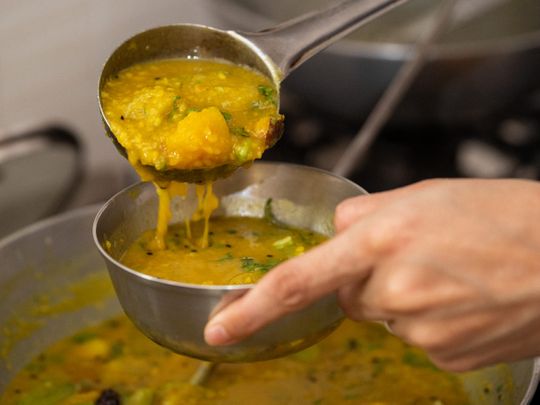Ingredients
150gm yellow moong dal (the smaller ‘sonamug’ variety if you can find it)
80gm potatoes
80gm sweet potatoes
160gm pumpkin
160gm jhinge (ridge gourd)
60gm borboti (string beans)
60gm thor (banana stem)
30gm ripe-jackfruit seeds (optional)
20gm (2 tbsp) mustard oil
3 dried red chillies
3 bay leaves
3 green chillies
¼ tsp kaalo jeere (nigella seeds)
10gm (¼ medium) tomato
½ tsp turmeric
20gm (to taste) salt
25gm (to taste) sugar
750ml water
¼ tsp atta (whole-wheat flour)
1 tsp ghee
¼ tsp bengali garam masala
12gm (1 sprig) coriander leaves (when in season)
Method
Note
The main vegetables used in this recipe are potatoes, sweet potatoes, pumpkin, jhinge, borboti, thor and ripe-jackfruit seeds. They total 620gm by weight. If you can’t find any particular vegetable, feel free to increase the quantity of one or more of the other vegetables. As long as their total weight remains the same, you should be able to follow the proportions given for the rest of the ingredients.
Steps
1. First prepare all the vegetables: Cut potatoes and sweet potatoes in 3-cm cubes, pumpkin and jhinge or ridge gourd in 4-cm cubes, borboti or string beans 4-cm long, and thor or banana stem in 2-mm discs. Halve the ripe-jackfruit seeds.
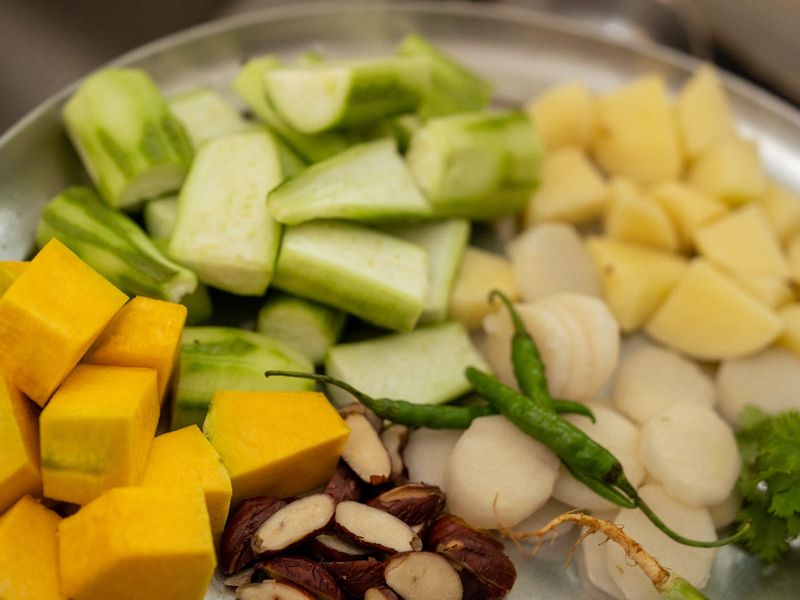
2. Set a kadai on medium-low heat. Dry-roast yellow moong dal, stirring it constantly for even roasting. The dal will release a nutty aroma and change colour to dark yellow or light brown. This should take about 5–6 minutes. Remove from the heat immediately to prevent it from browning further.
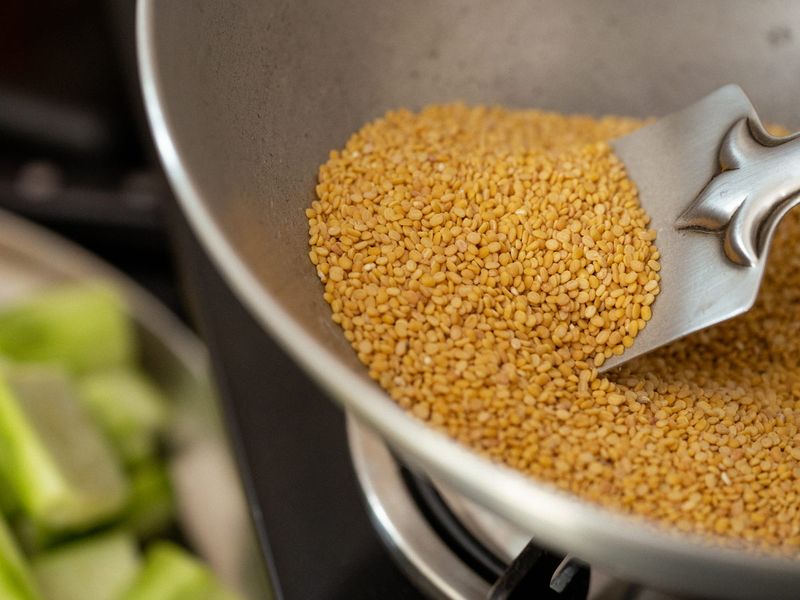
3. Wash the roasted moong dal, and set it to boil in a saucepan with 750gm water and 4tsp salt.
4. Once the water comes to a boil, add the vegetables, starting with the hardest. So, add potatoes, sweet potatoes, pumpkin and thor first.
Give them a 5-minute headstart before adding the borboti, jhinge and jackfruit seeds.
Getting the timing right is tricky here, as the vegetables and dal should all soften at the same time without any of them disintegrating. You may need a couple of trials, depending on the nature of your water, dal, etc., to get the timing right. If you see the vegetables are cooked but the dal isn’t, fish them out and cook the dal until done.
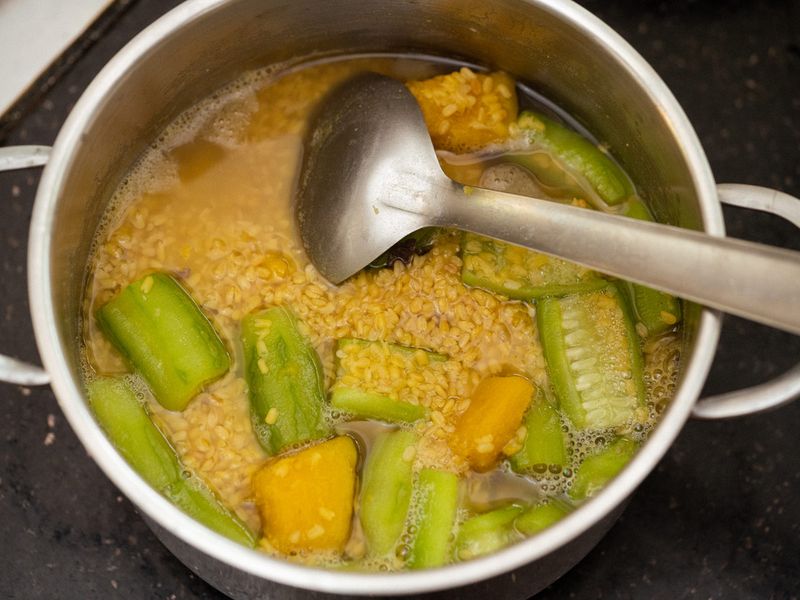
5. Heat mustard oil in a kadai until it turns pale yellow, smokes lightly and its raw smell has dissipated.
6. Temper it with dried red chillies, bay leaves, kaalo jeere and green chillies.
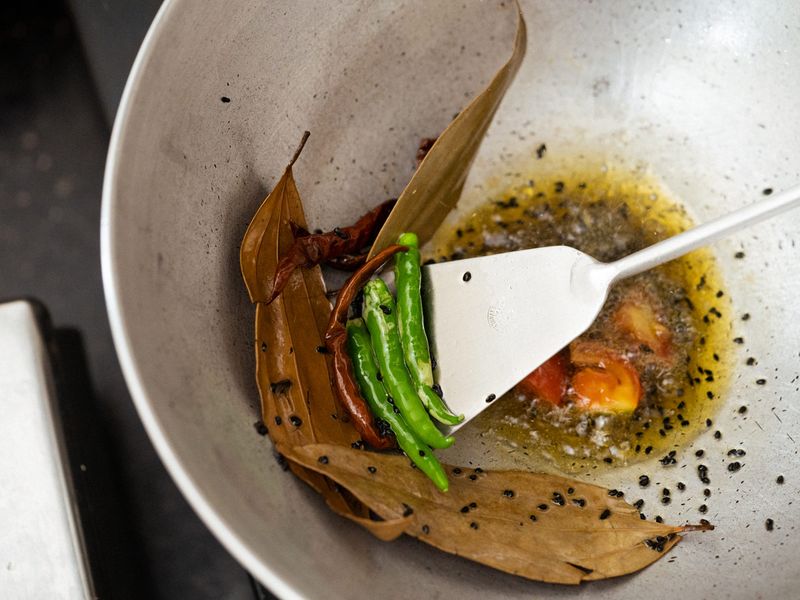
7. Add tomato (2-cm chunks) and fry for 15 seconds.
8. Add turmeric and fry for another 10–15 seconds.
9. Tip the saucepan with the dal and vegetables into the kadai.
10. Once it comes to a boil, add sugar.
11. Continue boiling until you reach the desired consistency. You may have to adjust it by adding a bit more hot water.
12. At the end, mix ¼ tsp atta in some water and add it to the dal. This will prevent the dal and liquid from separating, and provide a more cohesive texture without having to overcook the dal.
13. Finish with ghee, Bengali garam masala and fresh chopped coriander leaves.
14. Serve with rice and vegetables/fry.
Tell us about your favourite dishes or recipes at food@gulfnews.com
Note: This article was first published in May, 2021
Tell us about your favourite dishes or recipes at food@gulfnews.com



